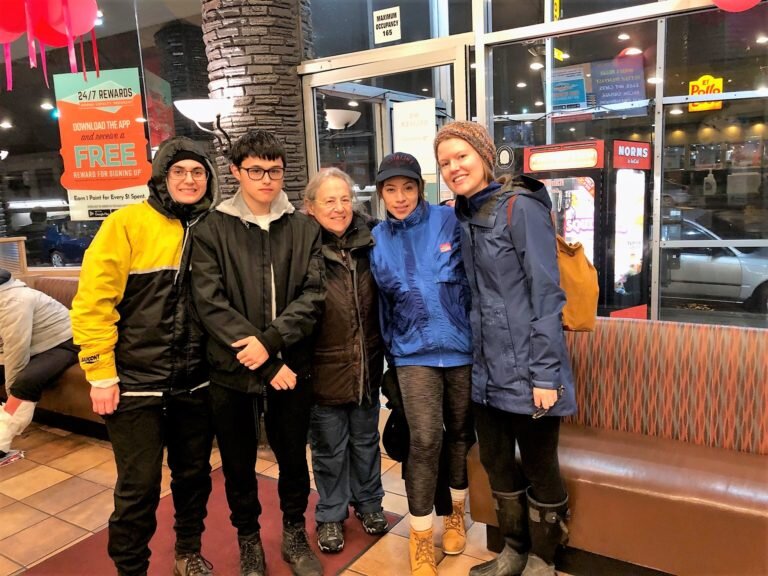Braving the Rains for Clean Water
April 16, 2019CWW sampling stormwater in the field.
Spring is here! Although it is time to say goodbye to rainy days, here at Los Angeles Waterkeeper (LAW) we cherish the wet season. This past winter was one of the wettest Southern California has seen. Thanks to the heavy amount of rainfall we received, here at LAW we stayed active. We work with volunteers in our Community Water Watch (CWW) program to collect stormwater runoff from industrial facilities, to investigate how well they are managing the various metals and chemicals on their sites.
My name is Maricarmen Hernandez, and I am a Watershed Intern at LAW. I am currently a graduate student at USC, and I plan to become a doctor. I am passionate about understanding how one’s environment plays a crucial role in human health. I believe everyone is entitled to living in a clean, healthy atmosphere. Through participating in programs like CWW, I am actively working towards this goal.
As you can imagine, collecting stormwater can be a very wet and cold experience. I prepare by having the essentials: raincoat, rain boots, and layers of warm clothing. All of the facilities that we investigate are in different areas of LA County, and sampling at each site is never the same as another. Our biggest complication is the rain itself! Rain is unpredictable, and so our schedule for sampling shifts a lot.
On a recent night of rain, we focused on sites in the San Fernando Valley. Prior to meeting with our group of volunteers, Melissa von Mayrhauser, Watershed Programs Manager, and I prepared for that night’s collection. We made sure we had enough supplies for each site where we were going to be sampling and background information about the facilities.
The rains were set to begin around midnight. We met outside a coffee shop around 10 pm to review documents, our strategy per site and safety protocols, and we split into two sampling teams with an experienced site captain for each.
CWW dining out.
Once my team arrived to our first facility, a metal scrapyard, the rain had slowed to a light drizzle. I soon realized that what Melissa said was true: rain is unpredictable, especially in Los Angeles. Sometimes it will be pouring and you can collect all samples in under 5 minutes, but other times the run-off is so slow that waiting to collect samples from one facility can take hours.
When we arrived at the scrapyard, we looked for run-off. For the moment, we were out of luck. The scrapyard had puddles of water, but none running down directly from the facility. In order to collect legally-defensible samples, we need to be able to collect a flow of water clearly coming from a facility. The scrapyard was visibly unpleasant overall. There were no foul smells from the site, but through the gated fence we could see piles of trash and metal pieces everywhere.
The rain seemed to be picking up its pace, and we decided that we should take the opportunity and sample at our second facility of the night. We would return to the current one. At the second facility, a concrete batch plant, we finally had the opportunity to collect samples.
Using the “clean hands, dirty hands technique” we learned at the CWW training, we collected water in the designated bottles with the appropriate tools. The water was dark brown and murky. We made sure that we used gloves to avoid sample contamination, we did not overflow bottles in case they had preservatives, and we did not step into the flow. Furthermore, although we collected water directly coming from the facility, we remained on public property.
For the samples we did collect, I took them to our lab in East LA. When we received the results, we compared them with the CA Toxics Rules criteria established by the EPA, and we found that the results exceeded pollution limits for metals and total suspended solids, which can be harmful for human health and aquatic life.
Any CWW collection night is fun and whether the group collected all the samples required or just one, it is a good feeling knowing that I am contributing to help improve our environment’s quality. It is also a good feeling to get to meet members of the community and realize that you are not the only one who wants the best for our environment.


